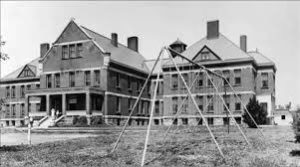Newspapers provide a vivid and informative snapshot into the past which cannot be easily duplicated. In the January 29, 1909 issue of Canton’s The Sioux Valley News, an item (with no byline) appeared that urged Americans to take President Theodore Roosevelt’s conservation message seriously. The writer explained: “Everywhere our resources are being wasted. . . We are depleting our soil, wasting our native timber, allowing our streams to carry away the best of the land, half managing our mines and especially draining our wonderful artesian well supply.”
One column over is a piece titled “So Deceptive,” which begins: “Backache is so deceptive. It comes and goes–keeps you guessing. Learn the cause–then cure it. Nine times out of ten it comes from the kidneys. That’s why Doan’s Kidney Pills cure it. Cure every kidney ill from backache to diabetes.” This introduction is followed by a long testimonial from a Canton citizen.
Below that is a notice of teacher examinations, and in another column, an article about Queen Victoria of Spain’s attempts to abolish bullfighting in her country. The rest of the page is filled with ads for lumber and hardware, as well as an offer for a one-year subscription to both La Follette’s Weekly Magazine (edited by Senator A. M. Lafollette) and The Sioux Valley News for $2.25 in advance.
A week later, ads show that raisins are 6 cents for a one-pound package, four cans of sweet corn are 25 cents, and two tall cans of pink salmon are 25 cents.





























